Layered landscaping is like dressing your garden in its finest attire. It’s not just about throwing plants together; it’s about creating depth, texture, and a sense of harmony. Whether you’re working with a sprawling backyard or a cozy courtyard, layering can transform your space into a visual masterpiece.
1. Terraced Stone Walls
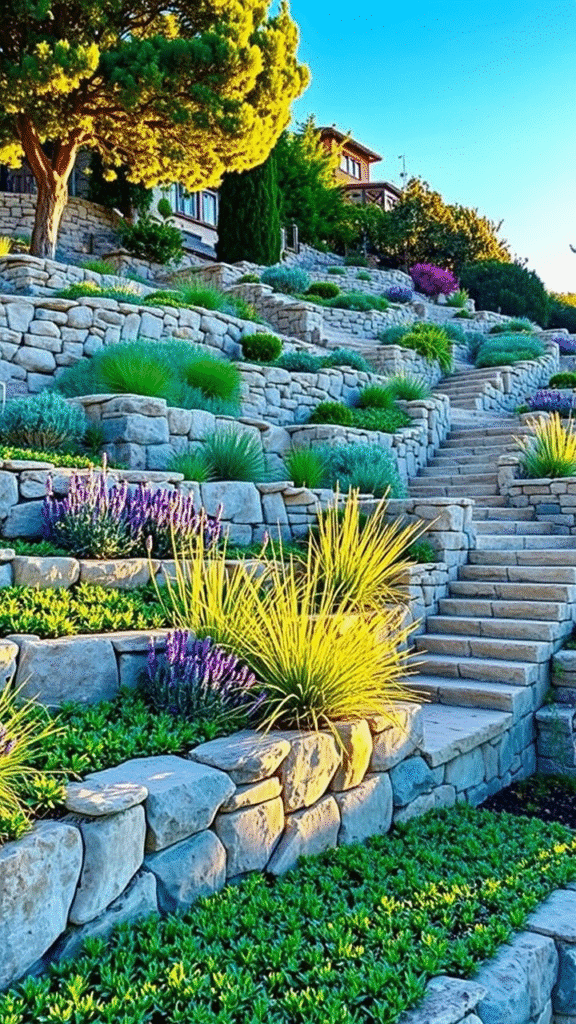
Building stone retaining walls adds levels to your garden. Each tier can host different plants, creating a cascading effect. It’s perfect for sloped areas, turning them into beautiful terraces.
2. Evergreen Backbones
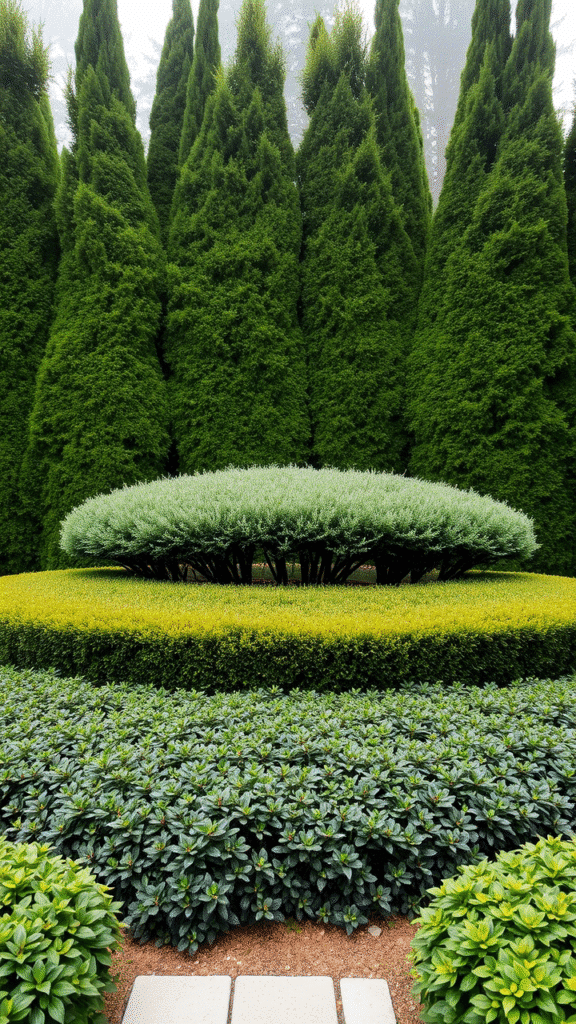
Evergreens provide structure year-round. Mix dwarf junipers with taller pines to create a layered effect. Add seasonal flowers like tulips or daffodils for pops of color.
3. Cascading Water Features
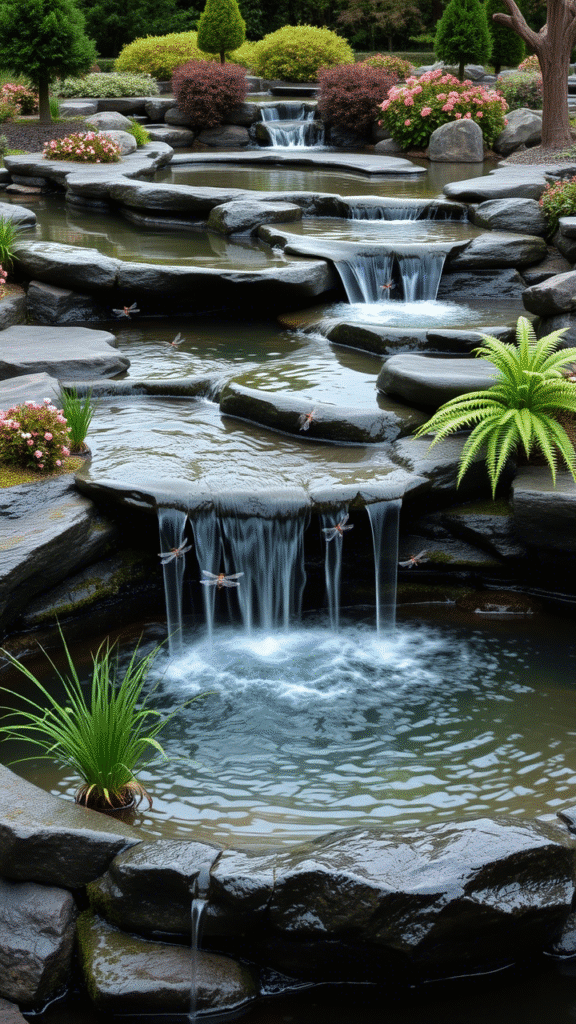
A cascading water feature adds a tranquil element. Surround it with mosses, ferns, and bamboo to enhance the layered look. The sound of flowing water combined with lush greenery creates a serene atmosphere.
4. Perennial Color Layers
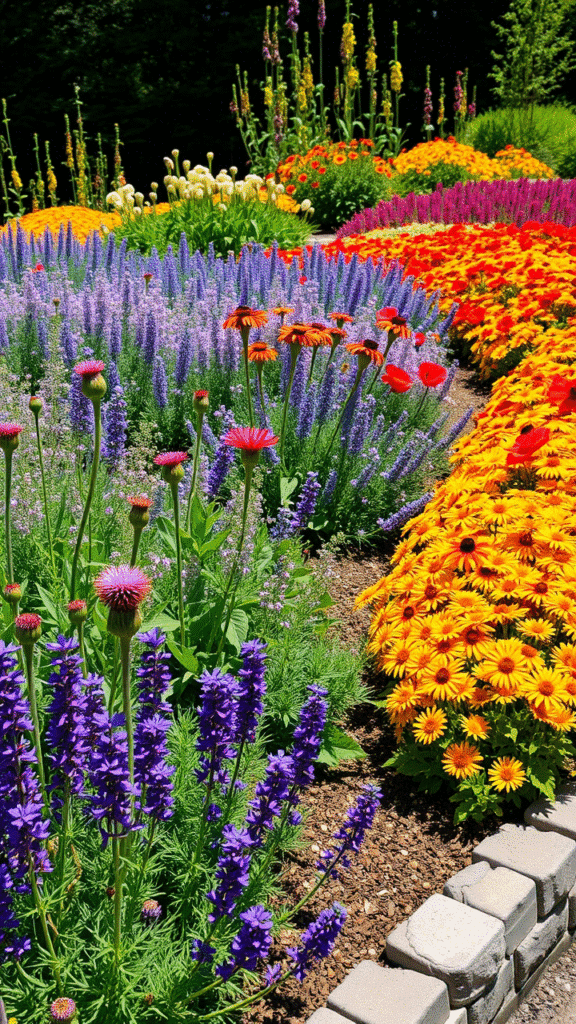
Layering perennials ensures continuous blooms. Start with creeping thyme at the base, followed by coneflowers and sunflowers. This arrangement provides a dynamic and colorful display throughout the year.
5. Multi-Level Flower Beds
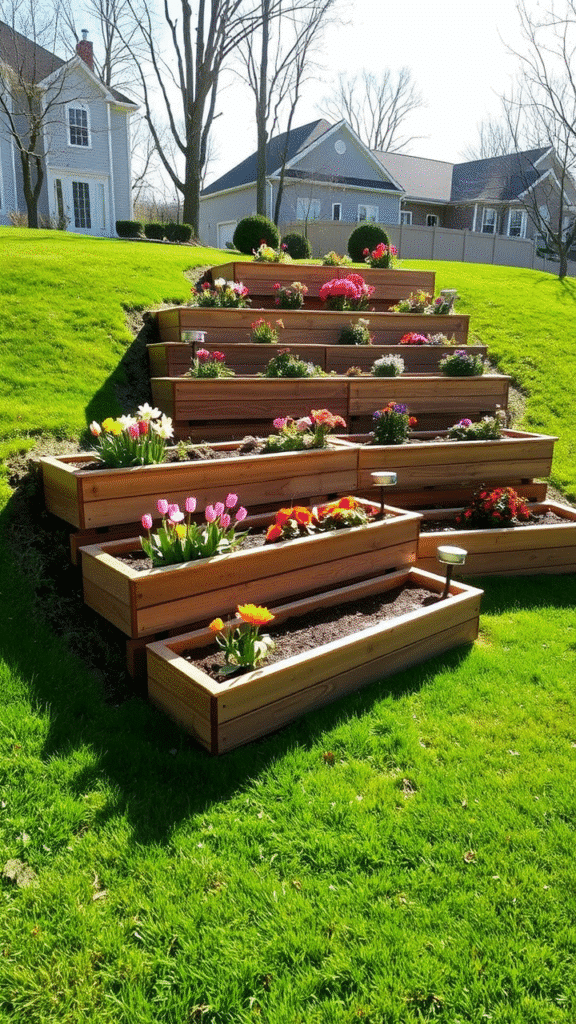
Define flower beds with materials like brick or stone. Place annuals like marigolds in the front, perennials like daisies in the middle, and shrubs at the back. This tiered design adds structure and visual interest.
6. Woodland Layers
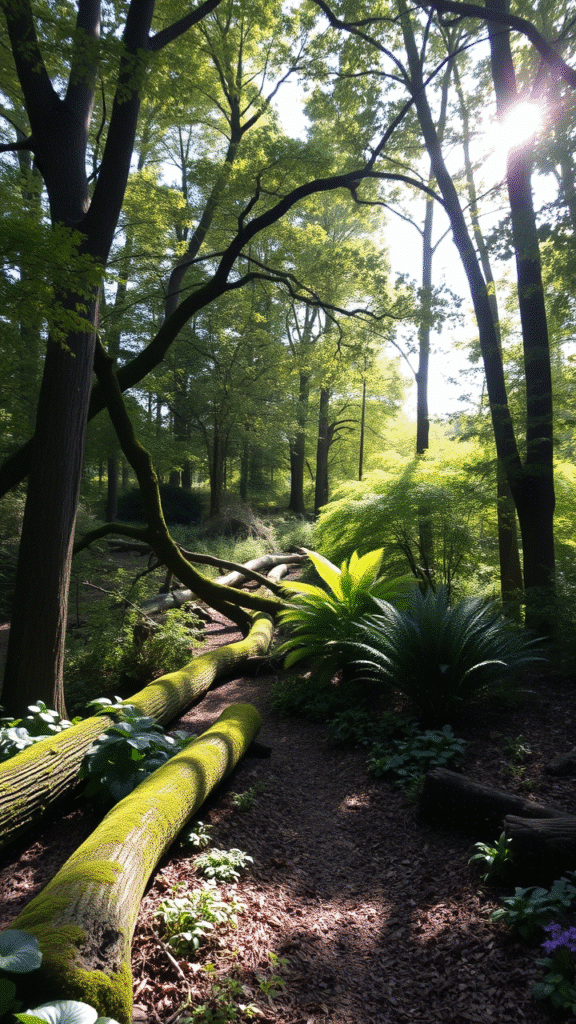
Recreate a woodland feel with layers of plants. Use shade-loving groundcovers like vinca minor, medium-height ferns, and tall trees like dogwoods. A winding path through this setup adds to the natural charm.
7. Vertical Gardens
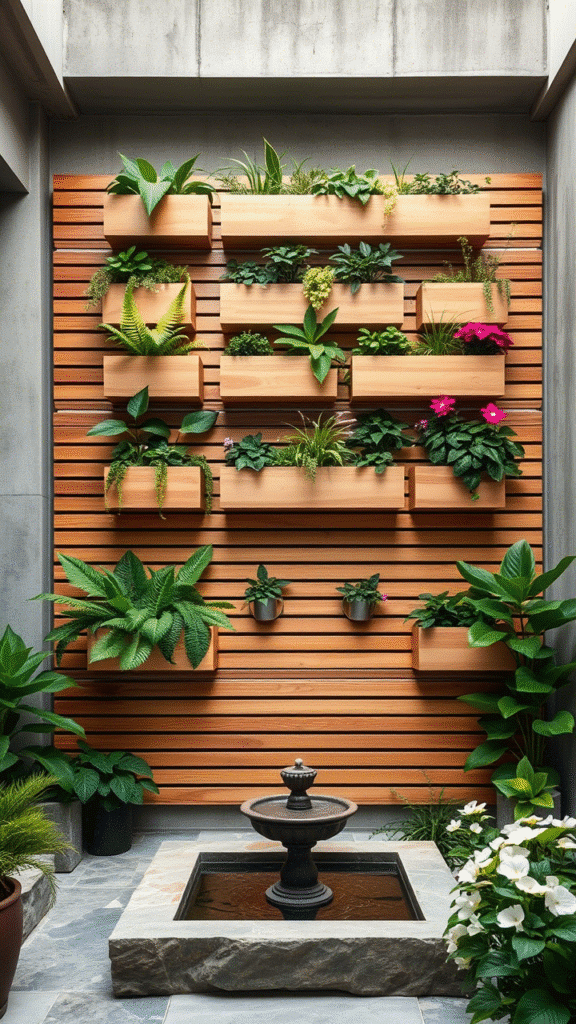
Utilize vertical space with climbing plants and trellises. Plants like clematis or jasmine can add height and softness. This approach is especially useful in urban settings with limited ground space.
8. Zen-Inspired Gardens
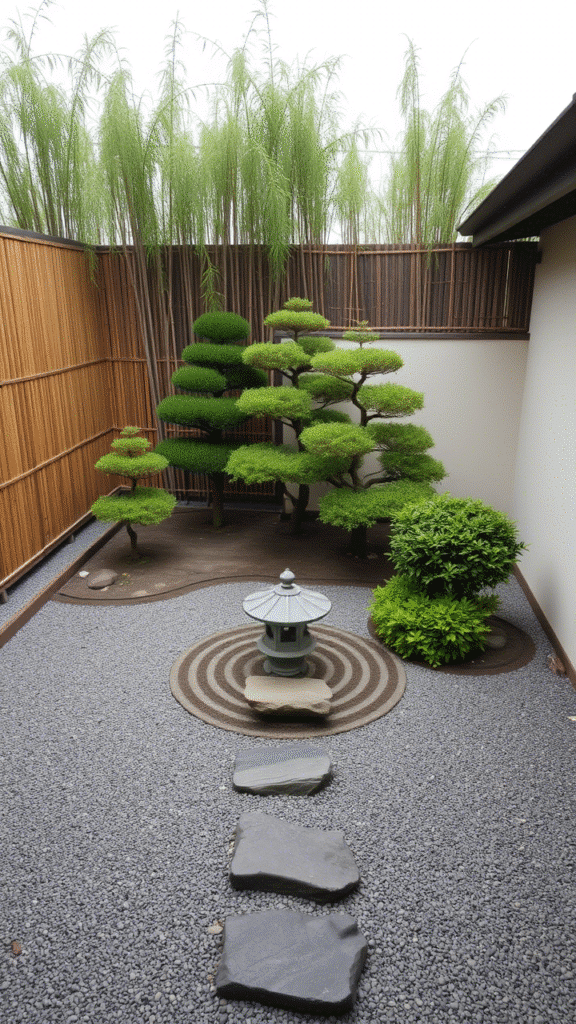
Create a peaceful retreat with a Zen-inspired garden. Incorporate minimalist elements, stone pathways, and carefully placed plants. The layered structure directs the gaze upward, fostering a sense of calm.
9. Rock Garden Tiers
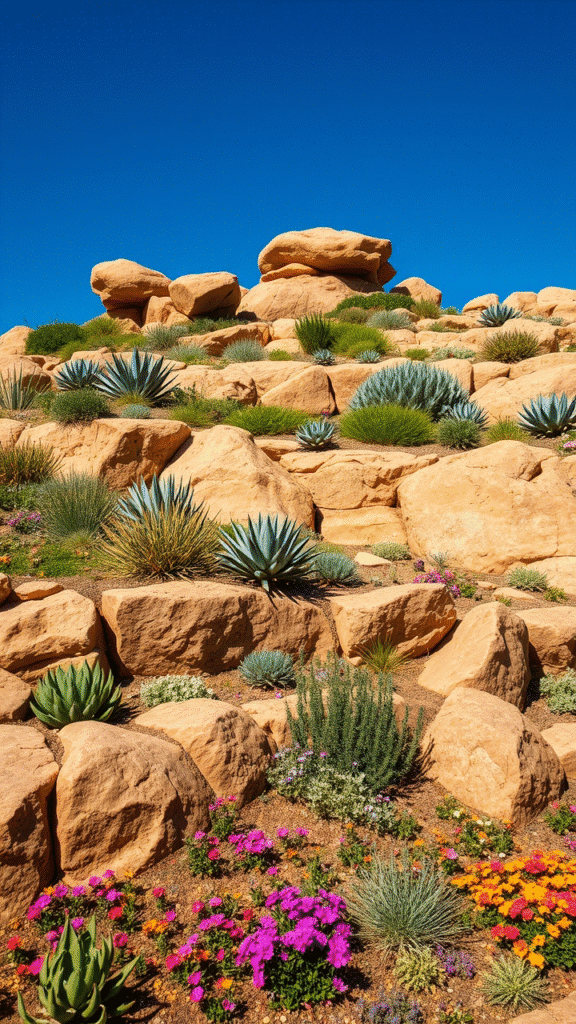
Integrate natural stones to form tiers in your garden. This design adds texture and helps with drainage. Pairing rocks with drought-tolerant plants creates a low-maintenance yet striking landscape.
10. Edible Landscapes
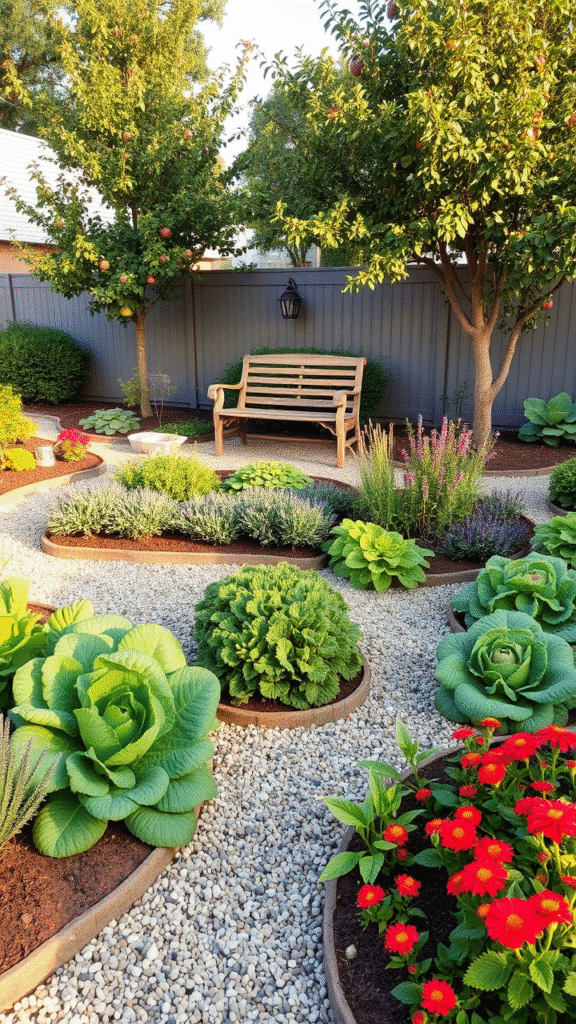
Combine beauty with utility by incorporating edible plants. Layer fruiting shrubs, herbs, and dwarf fruit trees. This approach not only enhances the garden’s appearance but also provides fresh produce.
11. Pollinator-Friendly Layers
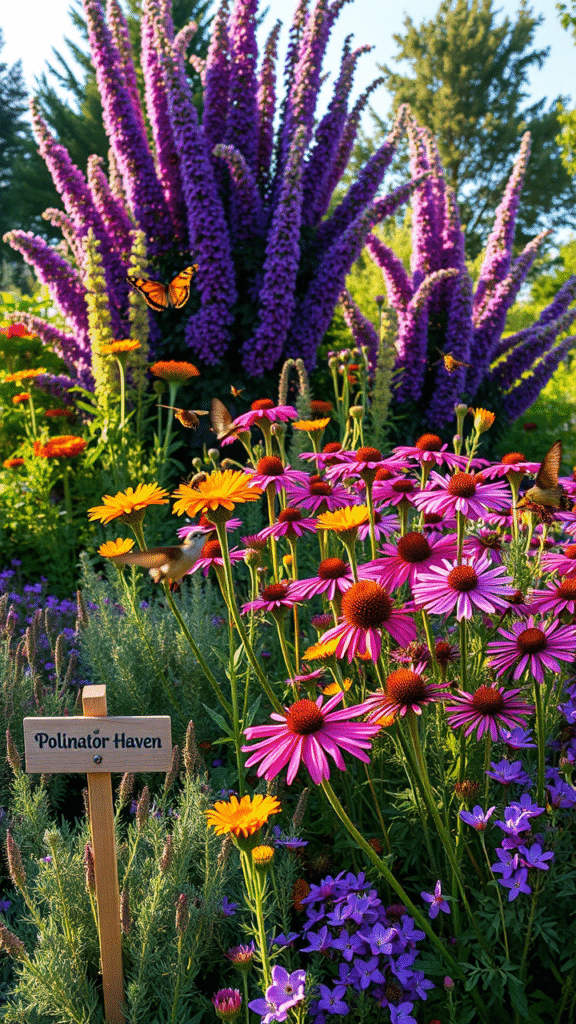
Support local wildlife by creating a pollinator-friendly garden. Layer plants like milkweed, coneflowers, and bee balm to attract bees and butterflies. This promotes biodiversity and a healthy ecosystem.
12. Seasonal Interest Layers
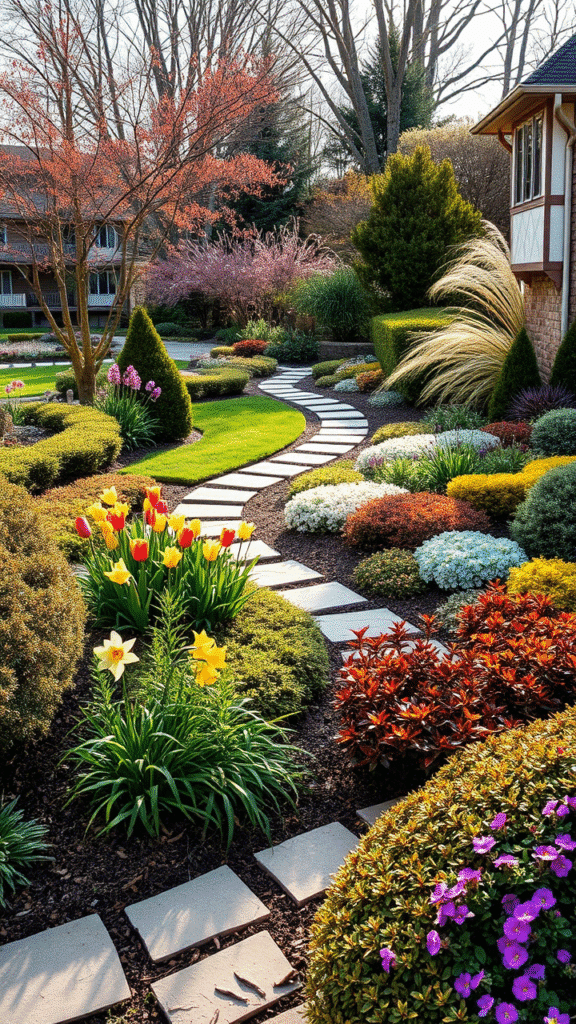
Ensure year-round appeal by selecting plants with different seasonal interests. Incorporate evergreens for winter structure, flowering perennials for summer vibrancy, and deciduous trees for autumn color.
13. Curved Planting Beds
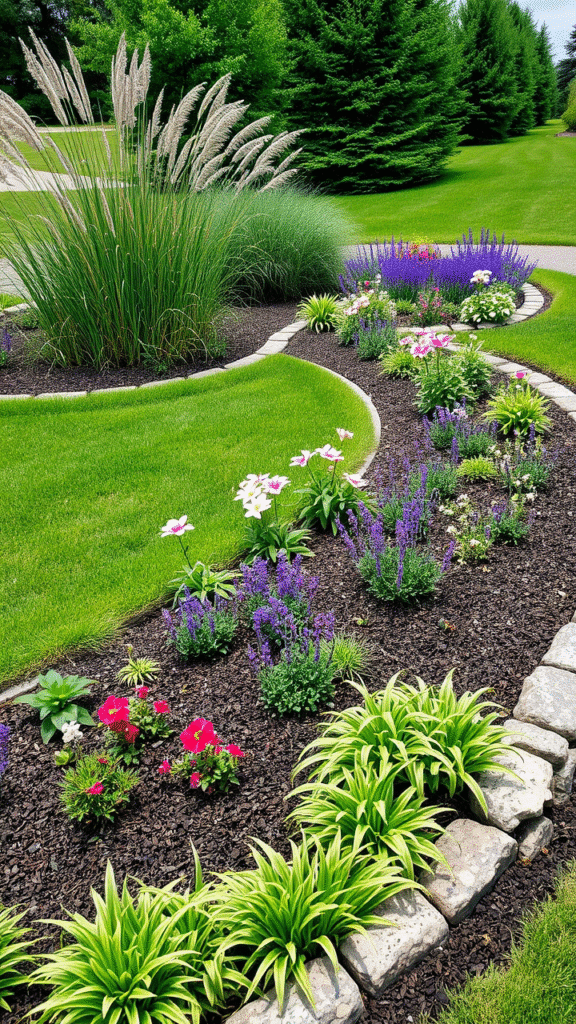
Instead of straight lines, use curved or irregular planting beds. This technique adds movement and depth to your landscape. It makes the garden appear more organic and inviting.
14. Hardscape Integration
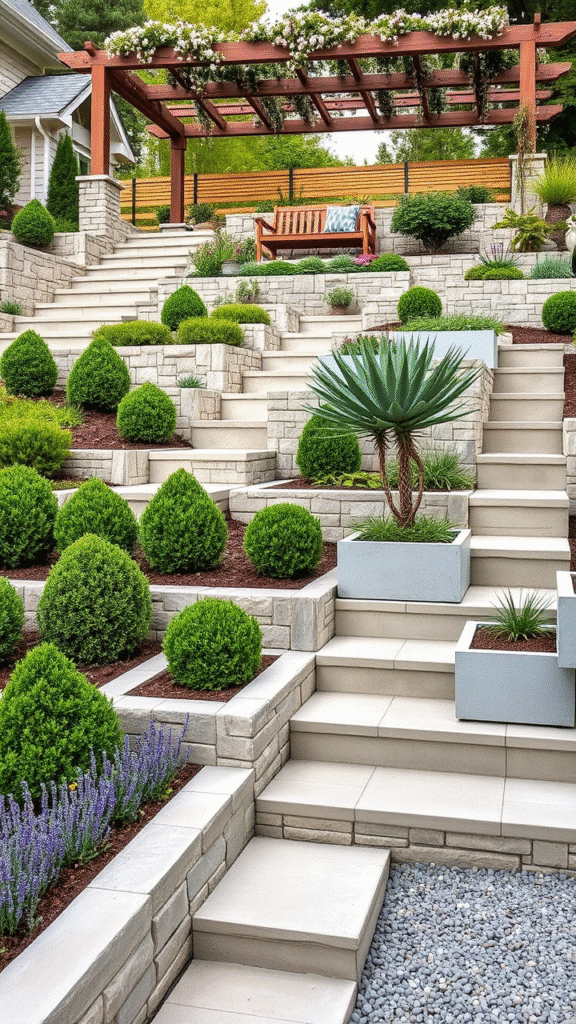
Incorporate hardscape elements like stone pathways, retaining walls, or trellises. These features add structure and visual interest to your garden. They also help organize the space effectively.
15. Mixed Textures
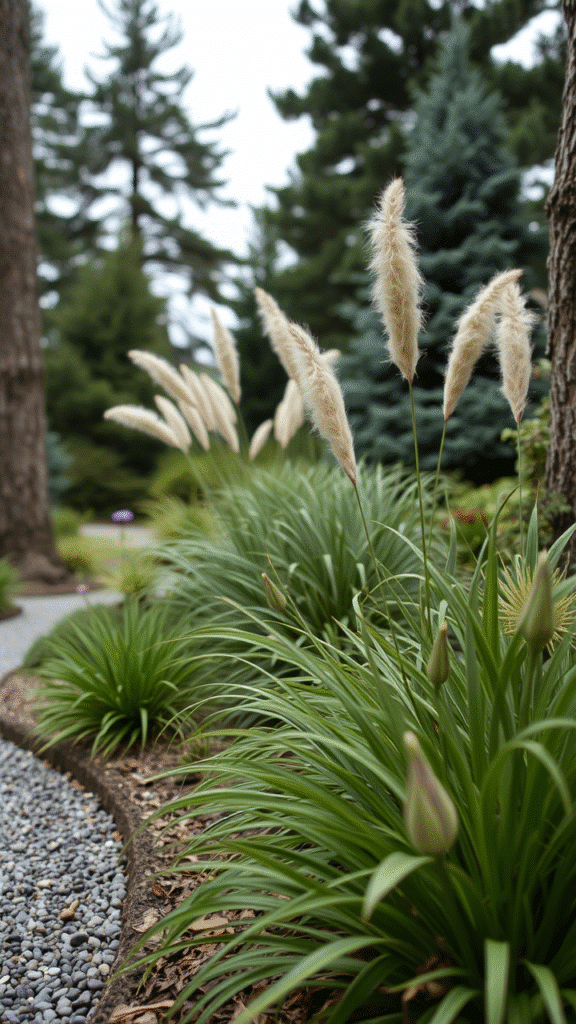
Combining different leaf textures and shapes adds richness to your design. Pair fine-textured plants like ferns with broad-leafed shrubs. This contrast creates a dynamic and engaging landscape.
16. Raised Garden Beds
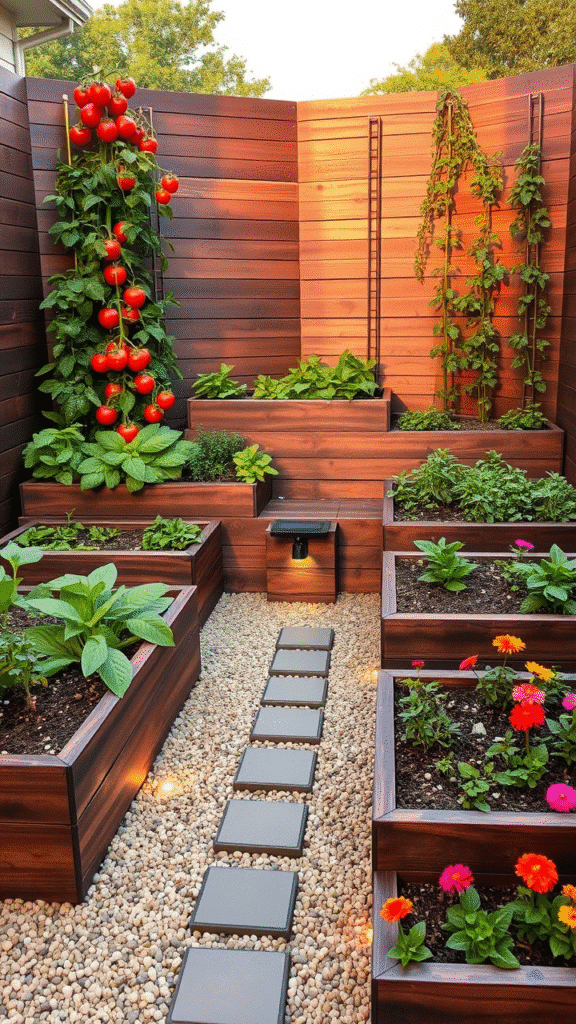
Elevate your planting areas with raised garden beds. This approach improves drainage and soil quality. It also adds a structured layer to your garden design.
17. Sunken Gardens
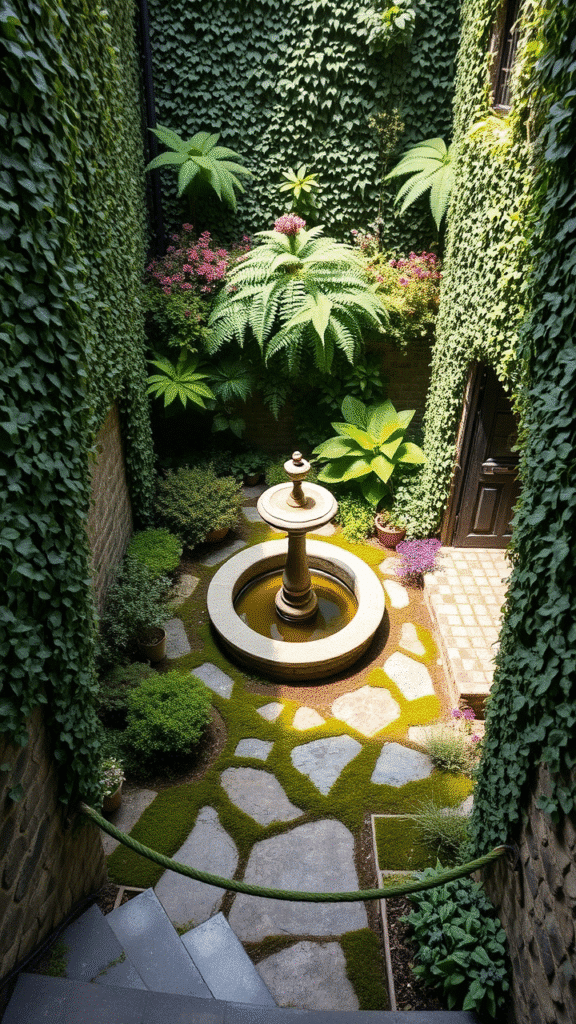
Create a sunken garden to add depth and interest. This design allows for layering plants at different heights. It also provides a unique focal point in your landscape.
18. Garden Steps
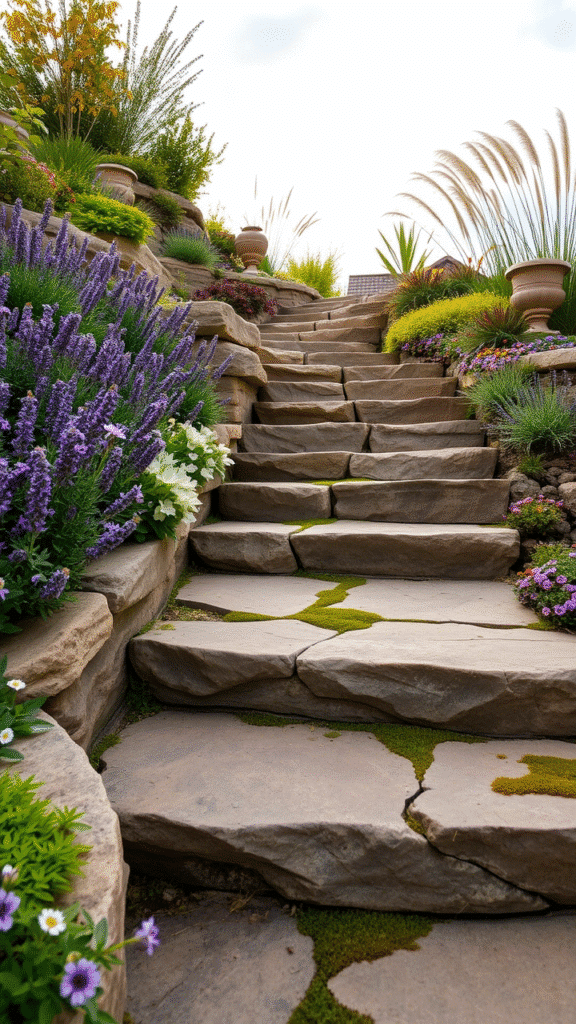
Incorporate steps into your garden design to create different levels. This adds dimension and allows for varied plantings. Steps can also guide visitors through the space.
19. Privacy Hedges
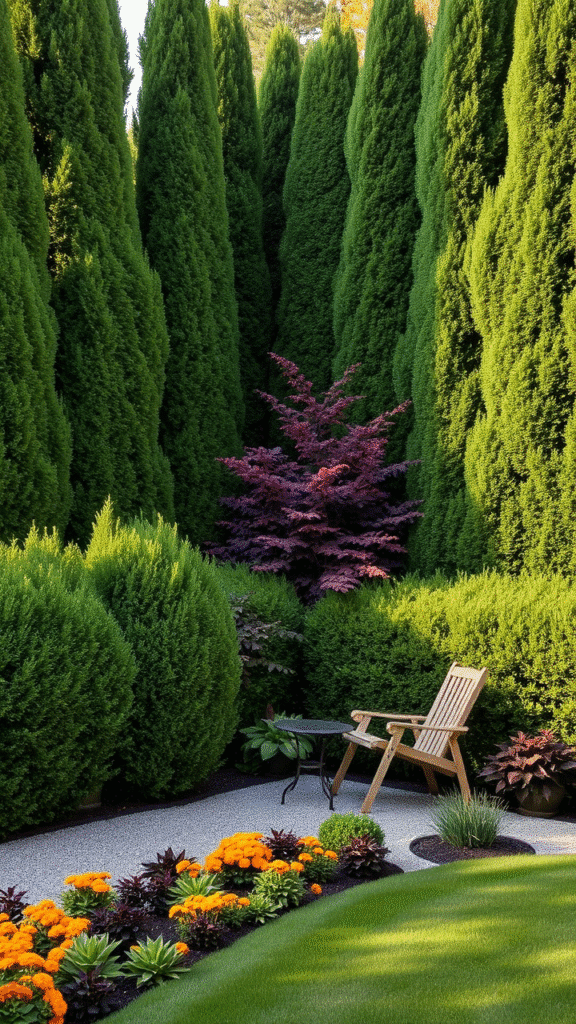
Use tall hedges or fences to create privacy in your garden. Layering these with climbing plants adds softness and beauty. This approach enhances both function and aesthetics.
20. Lighting Layers
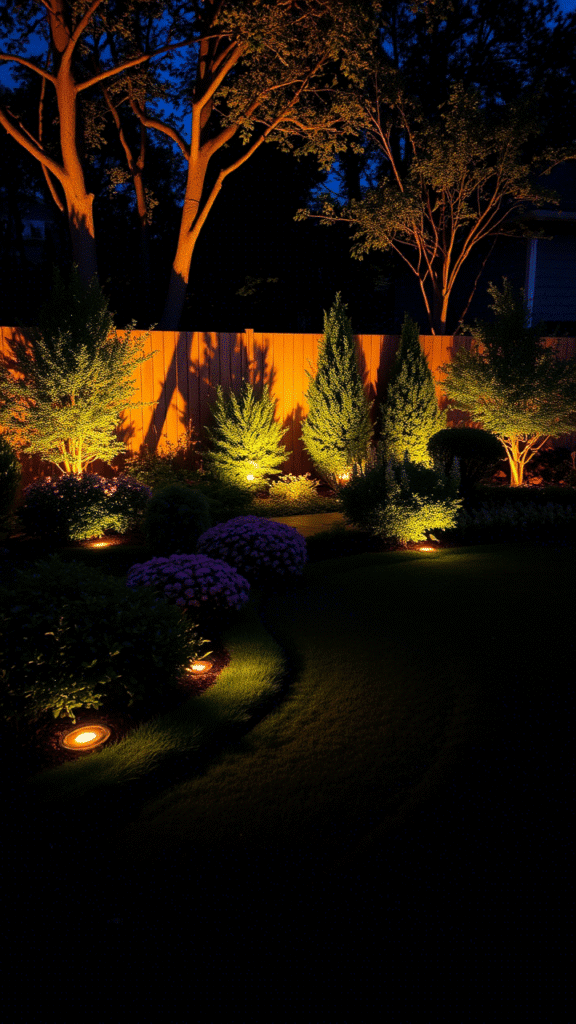
Enhance your garden’s ambiance with layered lighting. Use spotlights to highlight focal points and string lights to add warmth. Proper lighting can transform your garden into a magical space at night.
Layered landscaping is about more than just aesthetics; it’s about creating a space that feels alive and connected. By thoughtfully combining plants, structures, and elements, you can craft a garden that’s both beautiful and functional. Whether you’re working with a small urban space or a sprawling estate, layering can help you make the most of your outdoor area.
